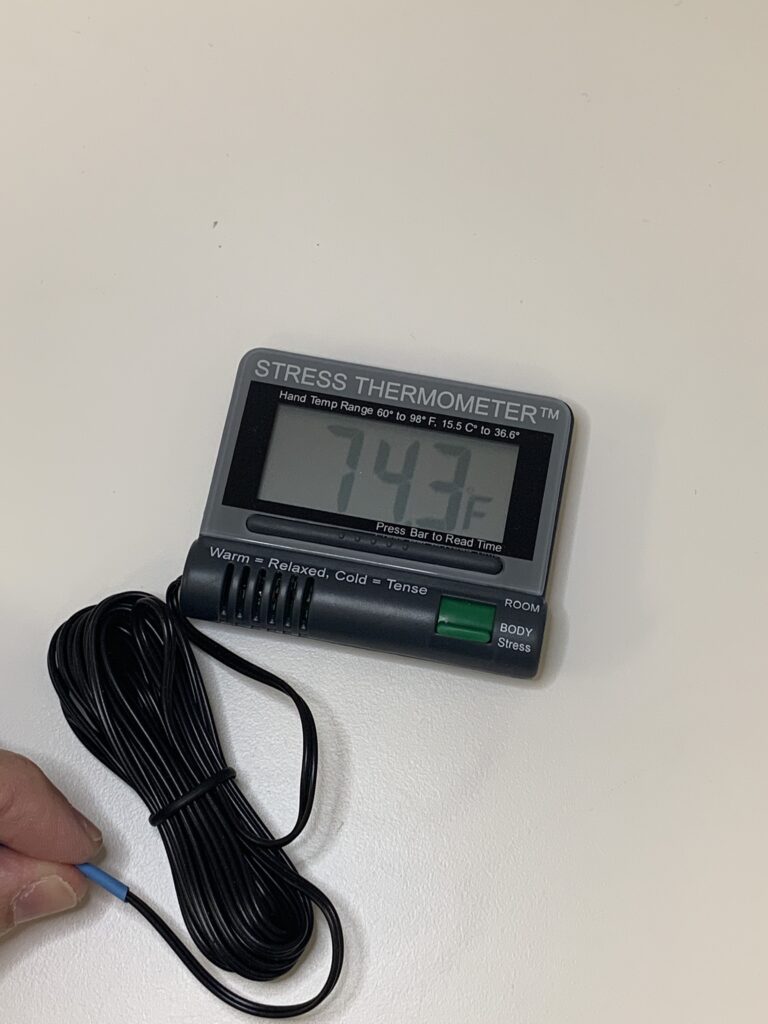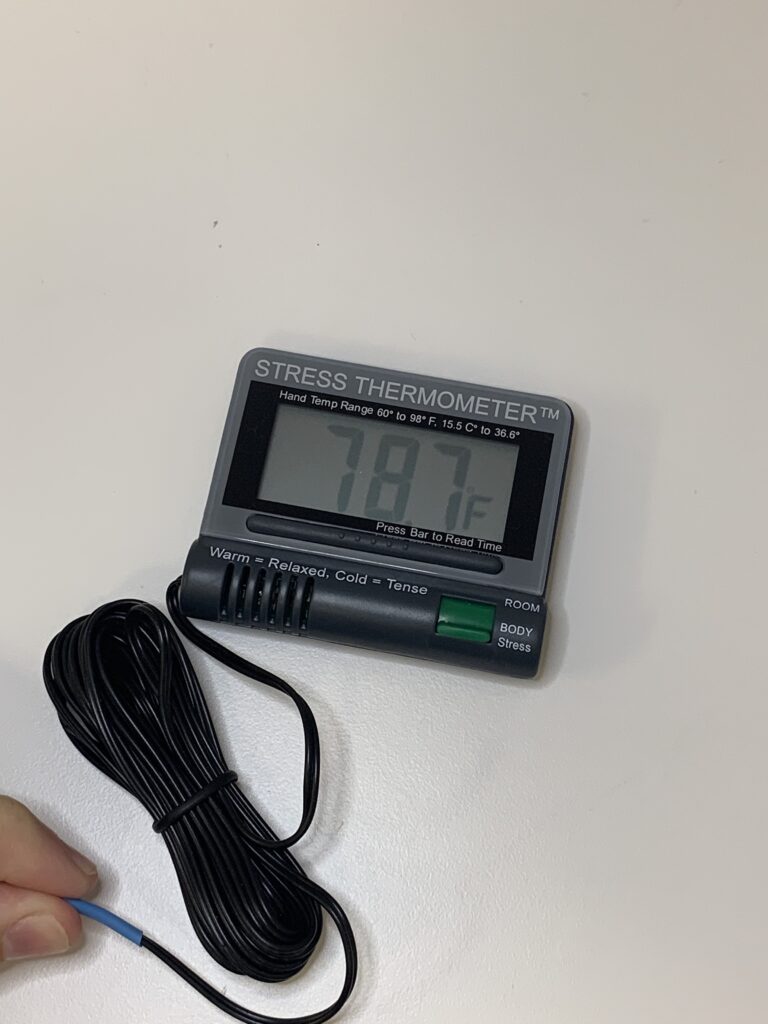Raising skin temperature with relaxation techniques
Warming relaxation technique
Meditation techniques such as a “warming technique” can be used to promote relaxation of muscle tension. It is possible to raise your skin temperature by practicing mindful, intentional relaxation with visualization of warming the body.
Why is raising temperature helpful?
Chronic muscle tension, can cause chronic blood flow restriction. This can lead to pain, decreased tissue quality, and poor circulation of the nutrients that the blood carries. Opening these blood vessels allows for proper circulation of nutrients to our tissues, including muscle, tendon, nerve, and fascia.
Fight or flight
Our bodies very often respond to stress (sometimes even good stress) with a “fight or flight” response. This is a primitive response to either run away or face our dangers (note: there also the option of “freeze”, which is a common technique children develop when fight or flight are not good options).
In these states, blood is shunted away from some areas in order to increase it in others (interestingly, these are similar to the areas of pain points required for a diagnoses of Fibromyalgia, but that’s another topic for another day). For example, when truly injured, like if we were stabbed, muscles need to tighten in order to vasoconstrict (tighten) blood vessels in to squeeze off these vessels to help stop the bleed.
So what happens when it only feels like I’ve been stabbed? Turns out, it’s pretty much the same. In addition, there are other changes with heart rate, blood pressure, and pupil dilation.
While this is all very helpful when we encounter a lion, what happens when “lions” are always there in the form of bills, family, work, illness, pain, or just habit…? We end up living in a state of chronic tension. This means that some of our tissues spend waaaay too much time with poor circulation and then start to function poorly.
Fight or flight is normal and necessary, but it is not sustainable for long-term stress
How do I reduce tension?
There are several relaxation techniques to reduce tension. This “warming” technique is listed as part 1, so look for other helpful ways to reduce tension in future posts.
The true warming technique has been researched and perfected with Buddhist monks (of course), and is called Tum-mo. They enter a deep meditation state and can increase body temperature by up to 17 deg*! Is 17 degrees necessary? Maybe. You never know when it could save your life (in Utah, this is more of a reality for us). But realistically, no. Even a few degrees shows us that we are on the right track in relaxing our muscles.
How do I know if I’m doing this relaxation technique right?
These sensors are not necessary to practice this technique, (but if you would like to try, let us know).
- Get comfortable and sit quietly for a few moments
- Notice any areas where you tend to hold muscle tension
- Soften any areas that feel tight and visualize bringing warmth to these newly-relaxed areas
- Picture blood flowing to arms, legs, abdomen, fingertips. (Your therapist can help make this more specific based on your individual pain needs)
- You will feel warm and tingly in the areas that are getting increased blood flow. You may also notice heaviness that feels like pressure or swelling.
- Look at hands and feet. Any changes in color or warmth with touch?
How long does this relaxation technique last?
If you only do this for a few moments and go back to the habit of chronic tension, the effects are still good but short lived. Generally, this lasts as long as the time spent actively practicing. But… the point is: the more you practice, the more the body learns this new habit and develops a new baseline of less tension. That means, the more you practice, and the more consistent you are, the more easily this reduces the habitual tension, and the less tension is produced overall. Lesson of today: CONSISTENCY. Consistency is far more important that perfection.
Perfection is impossible to attain, consistency is not.
There is a mountain of research showing that meditation produces multiple health benefits for the brain, nervous system, and overall Well Being. There are too many to list. A simple PubMed search will show you the evidence. The best evidence: try it.
Spending a few minutes to yourself to decrease tension and improve blood flow is always beneficial. There are no negative side effects to improving your body’s own natural efficiency.
How does this affect pelvic pain and pelvic floor tension?
The abdomen and pelvic floor are common places for the body to hold tension. The pelvic floor attaches to our tailbone, so when stressed, we can literally “tuck out tails”. This chronic tension in the pelvic floor can cause pain and dysfunction similar to the problems that tension in the jaw, shoulders and neck cause. This can also lead to constipation, abdominal pain, pain with sex, pressure regulation problems such as prolapse and incontinence, and more. If you have any pelvic floor conditions, specifically pelvic pain, see a pelvic Physical Therapist to see which tension-reduction technique is right for you.


